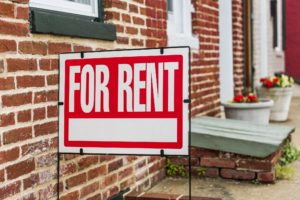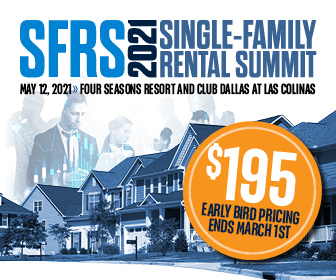 Despite elevated unemployment concerns last spring and summer, a report released Tuesday signals a full recovery for both the low- and high-priced rental tiers in the single-family rental market.
Despite elevated unemployment concerns last spring and summer, a report released Tuesday signals a full recovery for both the low- and high-priced rental tiers in the single-family rental market.
December 2020 data indicated that national low-end rental prices rose 3.3%, compared to high-end price gains of 4.3% in December. Prices rose 3.8% year-over-year, up from a 2.9% year-over-year increase in December 2019 for higher-price tier rentals.
That's according to the Single-Family Rent Index (SFRI) report from CoreLogic, which analyzes price changes nationally and across major metropolitan areas.
“In the final months of 2020, single-family rents posted the highest increases in over four years,” said Molly Boesel, Principal Economist at CoreLogic. “However, single-family rent price reaction to the pandemic and resulting recession differed greatly across metros. While rents in the Southwest United States strengthened, in some areas of the country—in particular, areas relying heavily on tourism—rents softened.”
Also, according to the index, renters sought detached properties and—like homeowners— larger spaces to weather the pandemic, which kept prices of single-family properties on the rise and multifamily rents tumbling. While single-family rents increased on average, some areas of the country experienced lower growth and rent drops.
Unemployment rates improved at various rates across the country in December and created a disparate impact on rent price growth. For example, unemployment in Austin, Texas, decreased to 5.3% in December 2020 while Honolulu’s unemployment decreased to 8.4%. And while year-over-year single-family rent in Austin grew by 4.7% in December, it decreased by 0.1% in Honolulu.
National single-family rent growth and the year-over-year changes, were as follows, CoreLogic reported:
- Lower-priced (75% or less than the regional median): 3.3%, down from 3.5% in December 2019
- Lower-middle priced (75% to 100% of the regional median): 3.6%, up from 3.1% in December 2019
- Higher-middle priced (100% to 125% of the regional median): 4.1%, up from 2.7% in December 2019
- Higher-priced (125% or more than the regional median): 4.3%, up from 2.4% in December 2019

As states begin managing administration of vaccines as well as mitigating continued unemployment concerns, rent prices will likely continue to experience mixed growth rates in metros across the nation, the researchers report. The full paper is accessible on CoreLogic's blog.
SFR stakeholders won't want to miss this year's Five Star Single-Family Rental Summit, scheduled for May 12, 2021, at the Four Seasons Las Colinas in Dallas. Click here or on the banner below for more info.

 theMReport.com Your trusted source for mortgage banking news
theMReport.com Your trusted source for mortgage banking news










